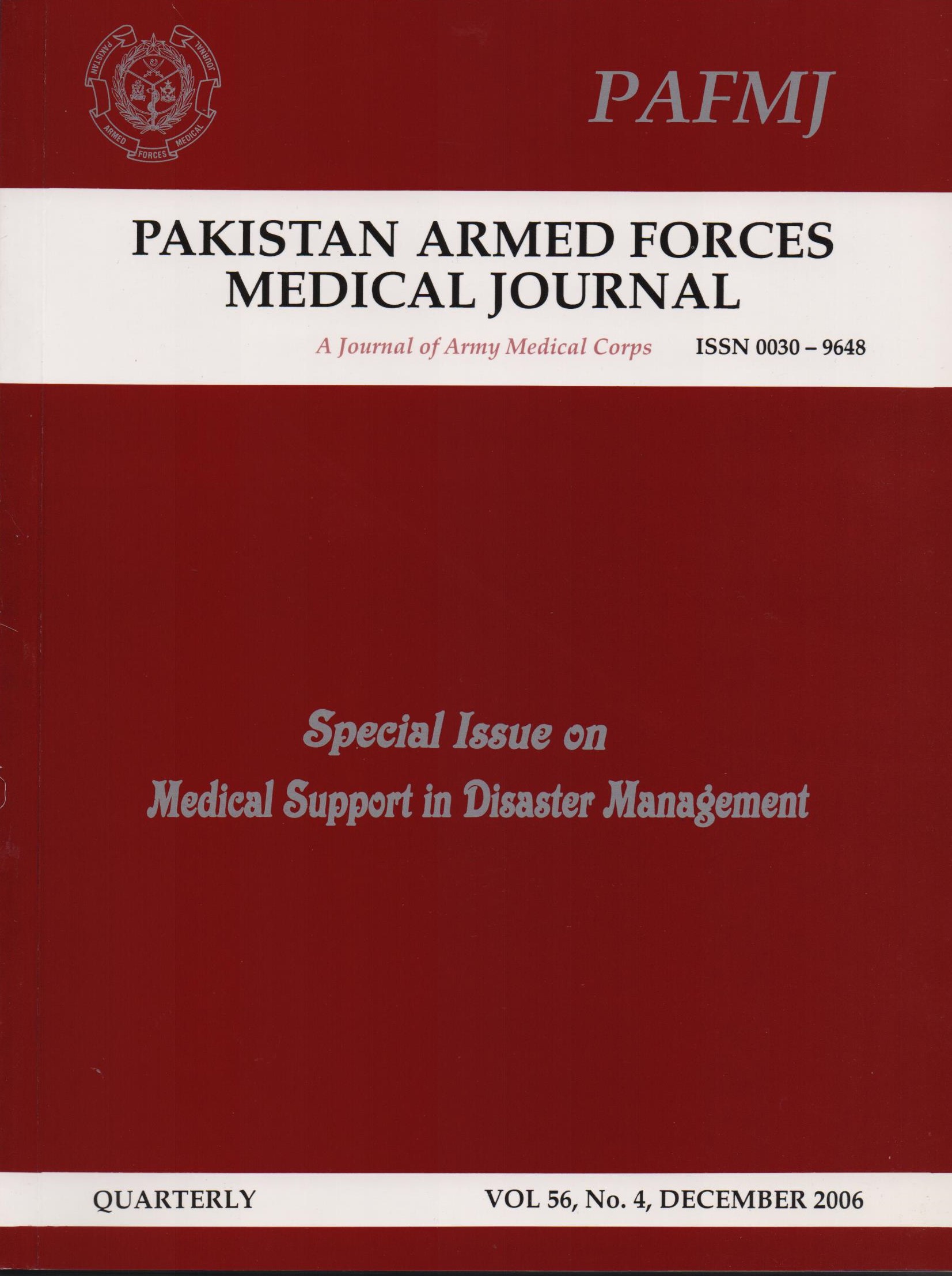SPINAL SURGERY IN EARTHQUAKE VICTIMS
Spinal Surgery
Keywords:
Spinal injury, earthquake,, spinal surgeryAbstract
Objective: Objective of present paper is to document the operations performed in earthquake spinal injury patients and to analyze the results of surgery.
Study Design: This is a quasi-experimental study.
Place and Duration of Study: This study was conducted at the department of Orthopaedic and Spinal surgery at Combined Military Hospital (CMH), Rawalpindi. Study started after earthquake in Pakistan on 8th of October 2005 and ended in August 2006.
Patients and Methods: 250 patients with spinal injury were admitted at the three main army hospitals at Rawalpindi (CMH, MH and AFIRM) after earthquake on 8th October 2005. Out of these, 110 patients underwent 120 major spinal operations. 12 patients were received from other units for revision surgery. 75% of the patients were civilians and 25% were army personnel and their families. Average age was 28 years and range was 8-65 years. 56% patients were females and 44% were males. 46% patients had complete neurological deficit and 54% had incomplete neurological deficit. Most common associated injuries were fractures of tibia and fibula. Most common level of injury was at T12/L1 (55%). After surgery almost all patients had rehabilitation at AFIRM.
Results: Post-operatively excellent (>75%) or good (50-75%) correction of deformity was achieved in 90% of patients. 92% patients had mild or no pain, post-operatively. Neurological improvement was seen in all patients with incomplete deficit except four. Some patients with complete deficit also showed improvement. Overall there was 1.5 AIS improvement per patient. At last follow up 46% patients were walking independently and 51% were independent in wheel chair.
Conclusion: Spinal surgery in patients with unstable spines after major disaster should be carried out by properly trained surgeons as soon as possible and in a setup where facilities for proper rehabilitation are available as it carries best prognosis for these high risk and at times paralyzed patients.











